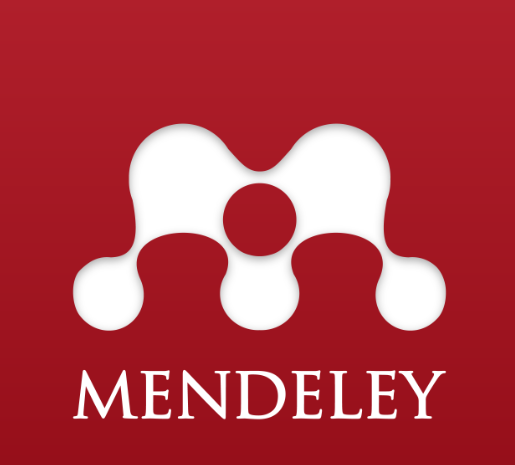The Popularity of TikTok and the Implementation of the AISAS Model on Marketing Communications Through TikTok
DOI:
https://doi.org/10.22219/mb.v12i01.17863Keywords:
Marketing Communication, AISAS Model, Tiktok, Social MediaAbstract
The development of social media use has increased during the Covid-19 pandemic. The existence of social like TikTok, it is hoped that it will be able to help entrepreneurs to continue their business. This study aims to find out what causes TikTok's popularity and how to implement the AISAS model in marketing communications through TikTok. Researchers chose literature review as a research method in this paper to look deeper into the phenomena that occur. The conclusion of this study shows that the popularity of TikTok is caused by fear of missing out, or the fear of missing the trend and not being able to engage in the conversations of people in the environment, the ease of downloading and sharing videos, the ease of using the application, interesting content and the opportunity to shorten the marketing funnel.
Downloads
References
Abdurrahim, MS, Najib, M., & Djohar, S. (2019). Development of AISAS Model to See the Effect of Tourism Destination in Social Media. Journal of Applied Management (JAM), 17(1), 133–143. http://dx.doi.org/10.%0A21776/ub.jam.2019.017.01.15
Adlan, H., & Indahingwati, A. (2020). AISAS Model Analysis of Purchase Decisions in the Use of SEO (Empirical Study of Consumers in Surabaya). Journal of Management Science and Research, 9(1), 1–15.
Akbar, BMB (2019). Application of AISAS and Guerilla Strategy to the Success of Agricultural E-commerce. Journal of the Businessman: Business Research and Management, 1(2), 41–54.
Amaly, L., & Hudrasyah, H. (2012). Measuring Effectiveness of Marketing Communication Using AISAS ARCAS Model. Journal of Business and Management, 1(5), 352–364.
Dewa, CB, & Safitri, LA (2021). Utilization of Tiktok Social Media as a Promotional Media for the Culinary Industry in Yogyakarta During the Covid-19 Pandemic (Case Study of TikTok Javafoodie Accounts). Treasures of Science: Journal of Tourism and Culture, 12(1), 65–71.
Dewanti, P. (2019). The Effectiveness of the AISAS Model in Marketing Communication on Instagram Promotion Features [High School of Economics, National Hero Family Foundation]. http://repository.stieykpn.ac.id/743/1/JOURNAL Putri Dewanti - 221700568.pdf
Fannani, SI, Najib, M., & Sarma, M. (2020). The Effect of Social Media Toward Organic Food Literacy and Purchase Intention with AISAS Model. Journal of Management & Agribusiness, 17(285–293).
Firmansyah, A. (2020). Marketing Communications. IKAPI No. 237/JTI/2019.
Hasiholan, TP, Pratami, R., & Wahid, U. (2020). Utilization of Tik Tok social media as a campaign media for the handwashing movement in Indonesia for the prevention of Corona Covid-19 1). 5(2), 70–80.
Herrman, J. (2019). How TikTok Is Rewriting the World. The New York Times. https://www.nytimes.com/2019/03/10/style/what-is-tik-tok.html
Lens. (nd). The Power of TikTok. https://www.tiktok.com/business/library/the-power-of-tiktok.pdf
Kasmana, K. (2020). AISAS Communication Flow Model and Other Models. https://repository.unikom.ac.id/66536/1/Alur AISAS .pdf
Kotler, P., & Keller, KL (2012). Marketing Management (E. Svendsen (ed.); 14th ed.). Pearson Education Inc.
Nurislaminingsih, R., Rachmawati, TS, & Winoto, Y. (2020). Reference Librarian as Knowledge Worker. Anuva, 4(2), 169–182.
Prasetyo, H., & Rachmawati, I. (2016). AISAS ANALYSIS (ATTENTION, INTEREST, SEARCH, ACTION, SHARE) ON ASUS ZENFONE USERS IN INDONESIA. E-Proceeding of Management: Vol.3, No.3, 2766.
Ramadhani, AD, Triyanto, A., & Muhammad, IF (2019). THE EFFECT OF E-MARKETING WITH AISAS MODEL (Attention , Interest, Search, Action , Share) ON INVESTMENT DECISIONS IN FINTECH SHARIA. Journal of Islamic Banking and Economics, 7(2), 47–57
.
Rizal, VZ (2019). Instagram Social Media Marketing Communication at Celebrity Cake
Shop Bandung Makuta (@Bandungmakuta) on Brand Awareness. Inter Komunika : Journal of Communication, 4(1), 75. https://doi.org/10.33376/ik.v4i1.291
Simpson, J. (2020). Why Your Business Should Be On TikTok (And Four Types Of Content To Promote Your Brand). Forbes. https://www.forbes.com/sites/forbesagencycouncil/2020/07/23/why-your-business-should-be-on-tiktok-and-four-types-of-content-to-promote-your- brand/?sh=13459180172b
Snyder, H. (2019). Literature review as a research methodology: An overview and guidelines. Journal of Business Research, 104(March), 333–339. https://doi.org/10.1016/j.jbusres.2019.07.039
Stephanie, C. (2020). Here are the 10 Most Viral TikTok Videos Throughout 2020. Kompas.Com. https://tekno.kompas.com/read/2020/12/07/08270027/inilah-10-video-tiktok-paling-viral-sepanjang-2020?page=all
Stephanie, C. (2021, April 19). Number of Monthly Active Users of TikTok Revealed. Kompas.Com. https://tekno.kompas.com/read/2021/04/19/14020037/sum-user-active-bulanan-tiktok-terunjuk?page=all
Sugiyama, K., & Andree, T. (2011). The Dentsu Way.
TikTok Compilations. (2020). Hair fail | TikTok Compilation. https://www.youtube.com/watch?v=SQvuE0zYGEg
TikTok For Business. (2021). Natur-E Promoting a New Skincare Brand Jingle with a Branded Hashtag Challenge. https://www.tiktok.com/business/en-US/inspiration/320
Virginia, & WIjaya, LS (2020). AISAS Model Analysis of the “BTS Effect” as a Brand Ambassador and Influencer. Journal of Communication, 11(2), 93–100.
Wagner, A. (2017). Are You Maximizing The Use Of Video In Your Content Marketing Strategy? Forbes. https://www.forbes.com/sites/forbesagencycouncil/2017/05/15/are-you-maximizing-the-use-of-video-in-your-content-marketing-strategy/?sh=3c3698893584
Wirawan, FW, & Hapsari, PD (2016). AISAS Model Analysis of Product Placement in Indonesian Films: Case Study: Culinary Brands in the Film What's Up With Love 2. Jurnal Rekam, 12(2), 69–81.
Yang, S., Zhao, Y., & Ma, Y. (2019). Analysis of the Reasons and Development of Short Video Application Taking Tik Tok as an Example. 9th International Conference on Information and Social Science. https://doi.org/10.25236/iciss.2019.062
Downloads
Published
Issue
Section
License
Copyright (c) 2022 Manajemen Bisnis

This work is licensed under a Creative Commons Attribution 4.0 International License.
Authors who publish with this journal agree to the following terms:
- Authors retain copyright and grant the journal right of first publication with the work simultaneously licensed under a Creative Commons Attribution-ShareAlike 4.0 International License that allows others to share the work with an acknowledgment of the work's authorship and initial publication in this journal.
- Authors are able to enter into separate, additional contractual arrangements for the non-exclusive distribution of the journal's published version of the work (e.g., post it to an institutional repository or publish it in a book), with an acknowledgment of its initial publication in this journal.
- Authors are permitted and encouraged to post their work online (e.g., in institutional repositories or on their website) prior to and during the submission process, as it can lead to productive exchanges, as well as earlier and greater citation of published work (See The Effect of Open Access).

This work is licensed under a Creative Commons Attribution-ShareAlike 4.0 International License.




71.png)





